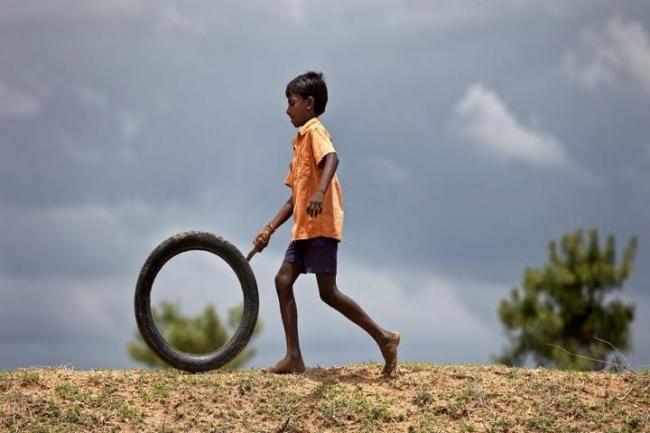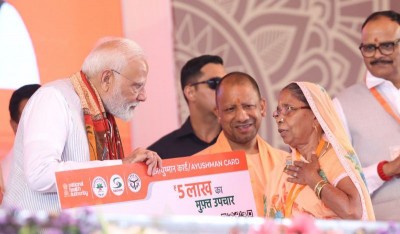
Nine in every ten children do not get adequate diet in Jharkhand , Bihar, NFHS data reveals
Only 7.5% of children in Bihar and 7.2% of children in Jharkhand within the age group of 6 – 23 months receive an adequate diet, whereas in states like Tamilnadu the situation is comparatively better as the figure stands at 31%; according to the trend analysis done by CRY – Child Rights and You, based on the latest NFHS findings.
Malnourishment in early years is directly linked to maternal health. Provision of quality ante natal care and addressing the issues of special nutritional requirement for expecting and lactating mothers also show worrying trends negatively impacting child health in the two states.
Only 3.3% of mothers in Bihar and 8% of mothers in Jharkhand had access to full antenatal care services. Moreover, more than one third of the total births in the two states continue to remain home-births.
Apart from health services, the issues also stem from behaviour and knowledge of the populace. NFHS data on child feeding practices and nutritional status of children further suggest that almost two-third of children under the age of 3 years in these two states (65% in Bihar and 67% in Jharkhand) are not breastfed within the first hour of birth.
Elaborating the retrogressive impact caused by poor nutritional status of children, Mohua Chatterjee, Programme Head, CRY (East) said, “Child malnutrition is an irreversible phenomenon in the lives of children. It transcends through the phase of adolescent and adult life. Overall, only a few of women in areas served by an Anganwadi centre receive food supplementation when they were pregnant and even fewer women receive food supplementation when they were lactating. Therefore focus should be given on increasing investment and allocating better in the policies and schemes that are mandated to deliver services pertaining to malnutrition.”
“Having the newborns breastfed within the first hour of birth is another critical indicator in child nutrition, as colostrum (the first milk of the mother), extremely rich in nutrients and antibodies, is highly crucial towards ensuring the basic nutrition and immunization they require at the very beginning of their life, towards which behavioral and social practices needs to be addressed through the delivery mechanism,” Ms. Chatterjee added.
Micronutrient deficiency too continues to remain a challenge for children in this age group. As per NFHS 4 findings, anaemia in children is found to have decreased across both the states, but still remains worryingly widespread. The analysis highlights that almost two-third of children (63.5% in Bihar and 69.9% in Jharkhand) within the age of 6 – 59 months are acutely suffering from anaemia. Prevalence of anaemia among high percentage of pregnant women within the age-group of 15-49 years (62.6% in Jharkhand and 58.3%in Bihar) further indicates that juvenile anaemia is merely a manifestation of the malnutrition-cycle transmitted through generations thus contributing to the ‘age-old heritage of under-nutrition’.
Further data on maternal health reveals only 9% of pregnant women in Bihar and 15% of pregnant women in Jharkhand consumed Iron & Folic Acid supplement for 100 days or more during pregnancy.
NFHS findings give three primary anthropometric indicators to indicate prevalence of malnutrition among children – stunting (low height for age), wasting (low weight for height) and underweight (low weight for age). While the percentage of stunted, wasted and underweight children under the age of 5 years has decreased in Bihar over the last decade, the state still has 43.9% of its children (U5) underweight. The scenario does not change in the neighboring state of Jharkhand, where underweight children constitute 47.8% of its U5 child population.
However, as the latest NFHS data reveals, both Bihar and Jharkhand have done fairly well in several child health and nutrition indicators like institutional delivery, immunisation and treatment of critical childhood diseases. A comparative analysis between NFHS 4 and NFHS 3 data suggests that institutional deliveries were less than 20% in Bihar and Jharkhand a decade ago (2005-06), and now have increased to around 60% of total births. But the progression rate of critical indicators like child nutrition, which has direct linkage with children’s overall growth and development remains far below expectations.
Atindra Nath Das, Regional Director (East), CRY – Child Rights and You said, “The NFHS is not just a reflection of the state of health and nutritional well being of children and expecting mothers, but it also provides the direction for corrective measures in state policies and programmes on child health and malnutrition. For both Bihar and Jharkhand, the data so released reinforces the need for the states to address nutritional security of children and expecting mothers as an emergency basis.”
“In the context of addressing child malnutrition, universalisation of Anganwadi Centres and a robust system of growth monitoring are measures that can lead us to lasting solutions of such issues”, he added.
Support Our Journalism
We cannot do without you.. your contribution supports unbiased journalism
IBNS is not driven by any ism- not wokeism, not racism, not skewed secularism, not hyper right-wing or left liberal ideals, nor by any hardline religious beliefs or hyper nationalism. We want to serve you good old objective news, as they are. We do not judge or preach. We let people decide for themselves. We only try to present factual and well-sourced news.







